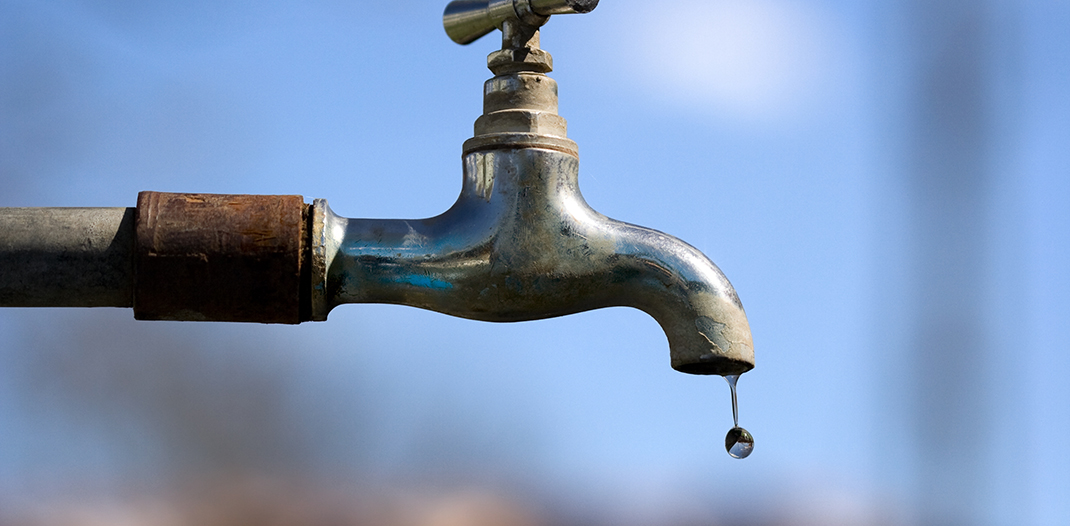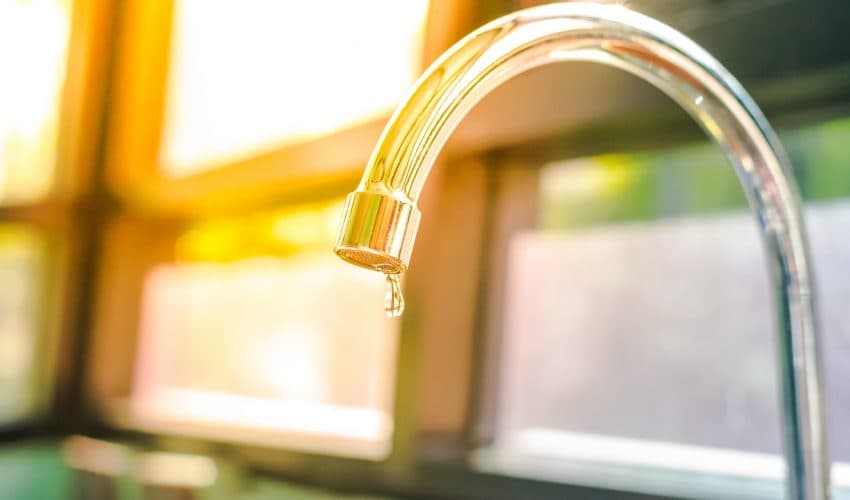Exploring the Effects of a Dripping Faucet
Exploring the Effects of a Dripping Faucet
Blog Article
Each person maintains their unique piece of advice in relation to Potential Health Risks Associated With Leaky Faucets.

Introduction
A dripping tap may look like a small inconvenience, yet its repercussions extend far past the occasional drip. Recognizing the results of a leaking tap is crucial for both homeowners and the environment. In this article, we'll explore the different impacts of this usual house concern and why addressing it promptly is vital.
Sources Of Leaky Faucets
Leaking faucets can arise from a range of variables, including damage, high water pressure, and deterioration. Gradually, the continuous use faucets can lead to worn-out seals and gaskets, triggering leakages to develop. In addition, too much water pressure can put pressure on plumbing fixtures, resulting in leakages. Corrosion and rust can likewise deteriorate tap parts, making them vulnerable to leak.
Water Waste
Among one of the most substantial consequences of a leaking tap is water waste. Even a little drip can add up to gallons of drainage over time. This not only drives up water costs yet also adds to water shortage and environmental deterioration. Attending to leaky taps without delay is essential for saving this valuable source and lessening its effect on the world.
Financial Impact
Along with drainage, leaking taps can additionally have a substantial monetary impact. Raised water costs are a straight repercussion of water wastage, costing property owners hundreds of bucks every year. Moreover, the expense of fixing water damages caused by leaks can be substantial, especially if left ignored for an extended period.
Environmental Impact
The environmental effect of dripping faucets expands beyond water waste. By conserving water, homeowners can contribute to wider efforts to mitigate water shortage and safeguard natural ecosystems. Lasting alternatives such as rainwater harvesting and water-efficient components can further minimize the ecological impact of house water usage.
Technological Solutions
Innovations in technology have resulted in the advancement of wise faucets and water-saving devices that assist lessen water wastage. Smart taps make use of sensing units to discover activity and adjust water circulation appropriately, lowering waste without sacrificing benefit. Water-saving tools such as aerators and low-flow showerheads are additionally reliable in conserving water without compromising performance.
International Viewpoints
While leaking taps may appear like a local problem, they contribute to wider global difficulties such as water scarcity and environment adjustment. In regions already facing water stress, every decline counts, making leakage prevention and fixing necessary. By embracing water-saving methods and purchasing sustainable innovations, property owners can play their component in dealing with these pushing global problems.
Regulatory Procedures
Federal government regulations play a crucial role in mitigating the impact of dripping faucets and advertising water preservation. From developing codes that call for water-efficient components to water-saving incentives and rebates, policymakers have a range of tools at their disposal. By carrying out and implementing these policies, federal governments can ensure that property owners prioritize water conservation in their lives.
Community Impact
Attending to leaking faucets needs cumulative initiatives at the area degree. By elevating understanding about the relevance of water conservation and supplying resources for leak discovery and repair, regional authorities can empower house owners to act. Initiatives such as water-saving rebate programs and leakage discovery campaigns can incentivize actions modification and promote liable water use.
Case Studies
Real-life examples of the impact of leaky faucets highlight the relevance of positive maintenance and timely repair services. From water damages to escalating water costs, the repercussions of overlooking leaks can be extreme. By sharing these case studies, home owners can much better understand the relevance of resolving leaky faucets promptly.
Educational Campaigns
Educational campaigns play a crucial role in increasing recognition about the impacts of leaking taps and promoting water conservation methods. Via workshops, workshops, and online resources, homeowners can discover exactly how to detect and repair leakages themselves. By empowering individuals with expertise and devices, instructional campaigns can cultivate a society of responsible water usage within communities.
Health and wellness Worries
Leaky faucets can develop helpful settings for mold and mold development, positioning health and wellness threats to occupants. The presence of mold can exacerbate respiratory system issues and allergies, especially in susceptible people. Additionally, water damages arising from leakages can compromise the structural honesty of buildings and cause costly repair work.
Do it yourself vs. Professional Repair service
When faced with a leaky faucet, house owners often discuss whether to try repair work themselves or employ an expert plumber. While do it yourself repairs can save money, they might not constantly resolve the hidden problem efficiently. Professional plumbers have the know-how and devices to diagnose and fix leakages appropriately, making certain long-lasting services and peace of mind for homeowners.
Safety nets
Protecting against dripping taps calls for regular maintenance and proactive procedures. Simple tasks such as changing damaged washers and seals can protect against leaks from creating. Additionally, upgrading to high-quality fixtures and decreasing water pressure can help lengthen the life-span of taps and lessen the threat of leaks.
Final thought
To conclude, the impacts of a leaky faucet prolong much past the periodic drip. From water wastefulness and increased water costs to health and wellness concerns and ecological effect, the repercussions of disregarding leaks can be significant. By addressing dripping taps promptly and taking on water-saving techniques, home owners can reduce these impacts and add to an extra lasting future.
Why You Shouldn’t Ignore a Leaky Faucet in Your Home
What Causes a Leaky Faucet?
Various factors can cause a leak, from loose and worn-out parts to corrosion. Your faucet has four essential components from which most plumbing issues will stem: the O-ring, the valve seat, the washer and the gasket.
What Is an O-Ring?
The O-ring is a stem screw that fastens parts of the faucet in place, preventing water from leaking out of the spout. Depending on your faucet type, the stem might have multiple O-rings. Water will drip from the faucet’s handles and base if this part breaks or deteriorates.
What Is a Valve Seat?
The valve seat controls the flow and temperature of the water. Found at the base of the handle, it works as a seal for the faucet’s stem. The valve seat ensures the water is allowed to flow or is blocked as the handles dictate. You’ll know it’s malfunctioning when water leaks from your faucet’s sides.
What Is a Gasket?
The gasket is found between the water inlet and the valve stem. It creates a seal between the faucet and the sink, holding its joints by aerators attached to the stem’s head. Water will trickle out from the base if the gasket isn’t working.
What Is a Washer?
The washer secures the handles and prevents leakage, serving a similar purpose to the O-ring. While the O-ring is ordinarily round and made from an elastic material, such as rubber, the washer is square-shaped and composed of brass, copper and other hard metals. If it malfunctions, corrodes or has been improperly installed, water will leak out of the handles, causing that incessant faucet drip.
Why Is a Leaky Faucet Dangerous?
A leaky faucet left alone for too long can have significant consequences.
Pest Infestations
Since bugs and rodents gravitate towards the scent of water, a leaky faucet will draw pests to your sink. Both are looking for leaks accessible through crawl spaces, which a faucet provides. If you leave water dripping for too long, you run the risk of an infestation.
Rust
If one of the faucet parts has started to corrode, the resulting rust can spread to your pipes and valves with startling speed. The rust might even lead to cracks or other impairments, resulting in more severe plumbing issues.
Your sink could also sustain damage from a leaky faucet. The water in your tap possesses sparse elements of calcium and iron that can stain your sink with repeated and prolonged exposure. Once those elements in the water have been open to the air for some time, your sink will start to rust, creating marks that can be difficult to remove.
https://www.tomsmechanical.com/blog/why-you-shouldnt-ignore-a-leaky-faucet-in-your-home

I was made aware of that article about Health Risks Posed by Leaking Faucets from someone on our other blog. Sharing is caring. Helping people is fun. Thanks a lot for going through it.
Report this page